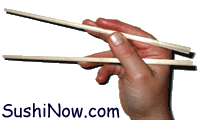How much do you know about green tea? We've all heard of it and may even drink it, but do you know which of the more than fifteen major Chinese varieties of green tea or eleven major Japanese varieties it is that you drink? Or perhaps it's a tea from yet another country? Where does it come from? How is it made? Now that we've aroused your curiosity, let's see if we can answer some of these questions.
What is Green Tea?
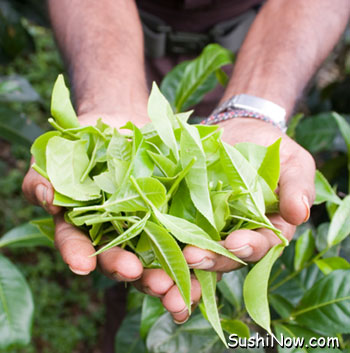 All teas come from the leaves of the perennial tea plant, Camellia sinensis, including green teas, black teas, and oolong teas. If made from any other plant, it is not technically a tea but an herbal infusion, sometimes called an herbal “tea” or even herbal blend. So what makes green tea green? The difference between the various teas lies in the processing of the leaves. In the production of green tea, freshly plucked tea leaves are steamed or otherwise quickly treated, which prevents the oxidation of the enzymes within the leaf. Black teas are produced by allowing the leaves to oxidize, or ferment. Oolong tea is made by allowing partial oxidation of the leaf's enzymes, making it a bit of a mix of the two.
All teas come from the leaves of the perennial tea plant, Camellia sinensis, including green teas, black teas, and oolong teas. If made from any other plant, it is not technically a tea but an herbal infusion, sometimes called an herbal “tea” or even herbal blend. So what makes green tea green? The difference between the various teas lies in the processing of the leaves. In the production of green tea, freshly plucked tea leaves are steamed or otherwise quickly treated, which prevents the oxidation of the enzymes within the leaf. Black teas are produced by allowing the leaves to oxidize, or ferment. Oolong tea is made by allowing partial oxidation of the leaf's enzymes, making it a bit of a mix of the two.
Over time more than 58 varieties of green tea have been reported to exist within China, though there are now that number has reduced to a few major varieties. The different varieties, including Longjing, the most famous of green teas, reflect the region the are grown in, the district they were grown in, and how they were prepared, such as cut or rolled. Different qualities within the same district and preparation are also considered different varieties. Japan also produces many varieties, including Matcha, the tea primarily used for the tea ceremony, and Sencha, which is the most common type of green tea in Japan. Tea growers believe that tea grown at higher altitudes is of higher quality, with their own varieties, and harvest time is also important. Every year, the first flush of leaves is harvested and is considered the prime crop of the year. Later flushes throughout the season produce lower quality teas.
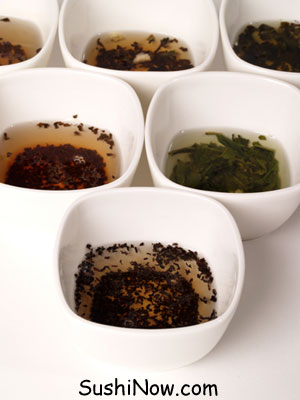
Popular varieties of green tea in China include Longjing, Hui Ming, Long Ding, Hua Ding, Qing Ding, and Gunpowder from the Zhejiang province, Da Fang, Huangshan Mao Feng, Lu An Guapian, Hou Kui, Tun Lu, Huo Qing, and Hyson from the Anhui province, and Yu Lu, Xin Yang Mao Jian, Bi Luo Chun, Rain Flower, Yun Wu, and Chun Mee from various other provinces. The major green teas of Japan include Gyokuro or “Jewel Dew,” regarded as the highest grade tea made in Japan, Matcha or “rubbed tea,” the powdered tea use for tea ceremonies, Mecha or “bud tea,” made from early leaf buds, Sencha or “roasted tea,” common Japanese green tea, making up three quarters of all tea produced in tea gardens, Shincha or “new tea,” Genmaicha or “roasted rice tea,” Kabusecha or “covered tea,” which is shaded prior to harvest, Kamairicha or “pan fired tea,”Bancha or “common tea,” which is made of a second flush harvest, Hōjicha or “roasted tea,” and Kukicha or “stalk tea,” produced with a stalk of one bud and three leaves. The vast majority of teas produced outside of China or Japan are of mediocre quality, however there are notable teas processed elsewhere, including Ceylon, Darjeeling, Vietnam, and Assam.
Health Benefits-
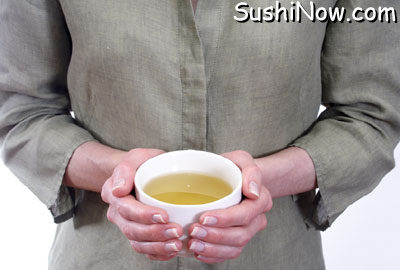 For over a thousand years, people have attributed many medicinal and health benefits to tea and to green tea in particular, and legends imply the benefits have been known long before that. Fairly recently, scientific evidence has shown that these legends do contain quite a bit of truth. One cup of tea contains about 50 milligrams of caffeine, which can be compared to the 65 to 175 milligrams of coffee per cup. Tea also contains polyphenols, tannin, trace elements and vitamins. What makes green tea better than other teas? Green tea is processed the least; its fermentation is prevented, whereas in comparison black teas and oolong teas promote fermentation. Being processed very little, the original nutrients and anti-oxidants remain in the leaf, and therefore they remain in your tea. The most notable of anti-oxidant present in green tea is epigallocatechin-3-gallate (EGCG), which is believed to be responsible for most of the health benefits attributed to green tea.
For over a thousand years, people have attributed many medicinal and health benefits to tea and to green tea in particular, and legends imply the benefits have been known long before that. Fairly recently, scientific evidence has shown that these legends do contain quite a bit of truth. One cup of tea contains about 50 milligrams of caffeine, which can be compared to the 65 to 175 milligrams of coffee per cup. Tea also contains polyphenols, tannin, trace elements and vitamins. What makes green tea better than other teas? Green tea is processed the least; its fermentation is prevented, whereas in comparison black teas and oolong teas promote fermentation. Being processed very little, the original nutrients and anti-oxidants remain in the leaf, and therefore they remain in your tea. The most notable of anti-oxidant present in green tea is epigallocatechin-3-gallate (EGCG), which is believed to be responsible for most of the health benefits attributed to green tea.
Some of the benefits attributed to green tea are weight loss, cancer prevention, reducing the effects of smoking and of fatty foods, reducing risk of rheumatoid arthritis, lowering cholesterol, boosting the overall immune system and much more. Some research has even shown that habitual tea drinkers even have stronger, denser bones. How does green tea do all this? It is believed that a component of the tea, called L-theanine, prepares the immune system to fight bacteria, viruses, and fungi. Both green and black tea were effective in improving memory and slowing the development of Alzheimer's, though green tea was found to be more effective than black. Both green and black teas were found to increase insulin activity in the body more than 15-fold, helping those who fight diabetes. The prevention or reduction of sun damage as well damage done by smoking is attributed to the plentiful anti-oxidants present in green tea, along with most of the other medical benefits.
History-
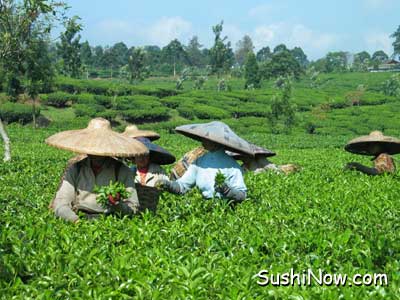 Although today it may be impossible to determine the exact time and method of its discovery, the origin of tea in some form has been said to trace back over 4000 years ago to China. In one legend of the origin of the tea plant, a great Chinese leader and medical expert, Sheng Nong was boiling water when the wind blew leaves into it from a nearby tea plant. After drinking some of the tea that resulted, he included the tea in his list of medicinal herbs, for he could feel it's miraculous power. Tea was initially used medicinally and as an offering, but is known to have been in common use during the western Han dynasty. Chinese scholars have discovered a story set approximately in the year 307 A.D. of many Chinese fleeing northern invaders who passed through modern day Shanghai and discovered street vendors already selling tea to passers-by. It has since become a widespread staple for the Chinese, though green teas are not as popular in southern China.
Although today it may be impossible to determine the exact time and method of its discovery, the origin of tea in some form has been said to trace back over 4000 years ago to China. In one legend of the origin of the tea plant, a great Chinese leader and medical expert, Sheng Nong was boiling water when the wind blew leaves into it from a nearby tea plant. After drinking some of the tea that resulted, he included the tea in his list of medicinal herbs, for he could feel it's miraculous power. Tea was initially used medicinally and as an offering, but is known to have been in common use during the western Han dynasty. Chinese scholars have discovered a story set approximately in the year 307 A.D. of many Chinese fleeing northern invaders who passed through modern day Shanghai and discovered street vendors already selling tea to passers-by. It has since become a widespread staple for the Chinese, though green teas are not as popular in southern China.
Tea has reportedly been introduced to Japan by a Japanese Buddhist monk returning to his homeland in the sixth century. It is said that he brought with him the seeds of Japan's first tea plants, though modern research indicates that there have been native Japanese tea plants in certain regions, but the Japanese did not know how to prepare it. The story is then only half true. Over time and with continued Chinese influence, the drinking of green tea is known to have become popular among the Japanese high society in the ninth century, from its ceremonial beginnings as early as the seventh and eighth centuries. The Samurai were known to have a tea game called “To-cha” in which they would taste teas in different areas and try to guess their areas of production. From the 13th to the 16th centuries, the game disappeared but the tea became a new integral part of an historic culture. It was during the 16th century in 1580 that the Japanese tea ceremony as we know it today was established by Sen Rikyu. The Japanese tea ceremony, which is completed by the hands of three people, expresses the Japanese aesthetic sense of Zen, and continues to be practiced today.
